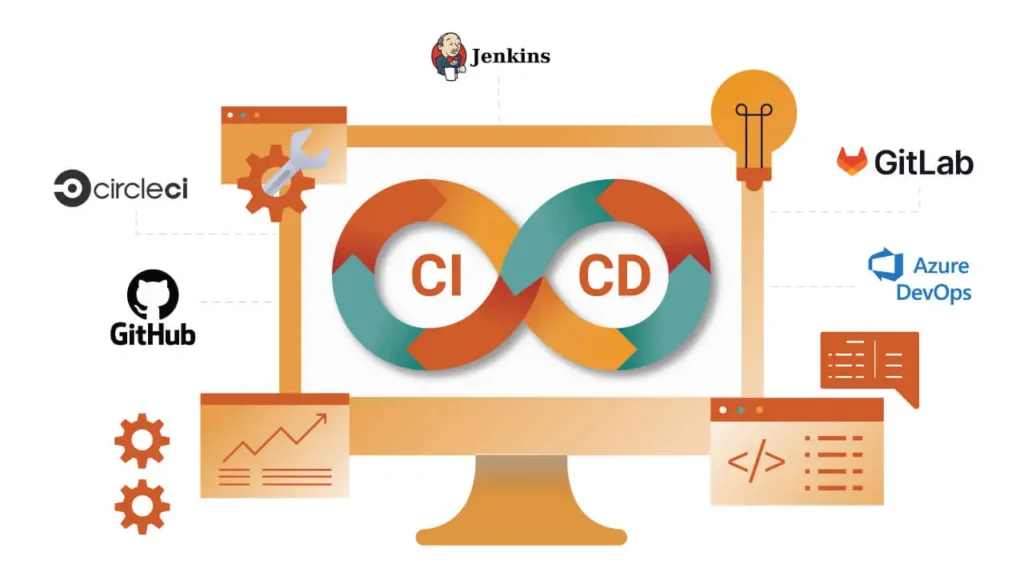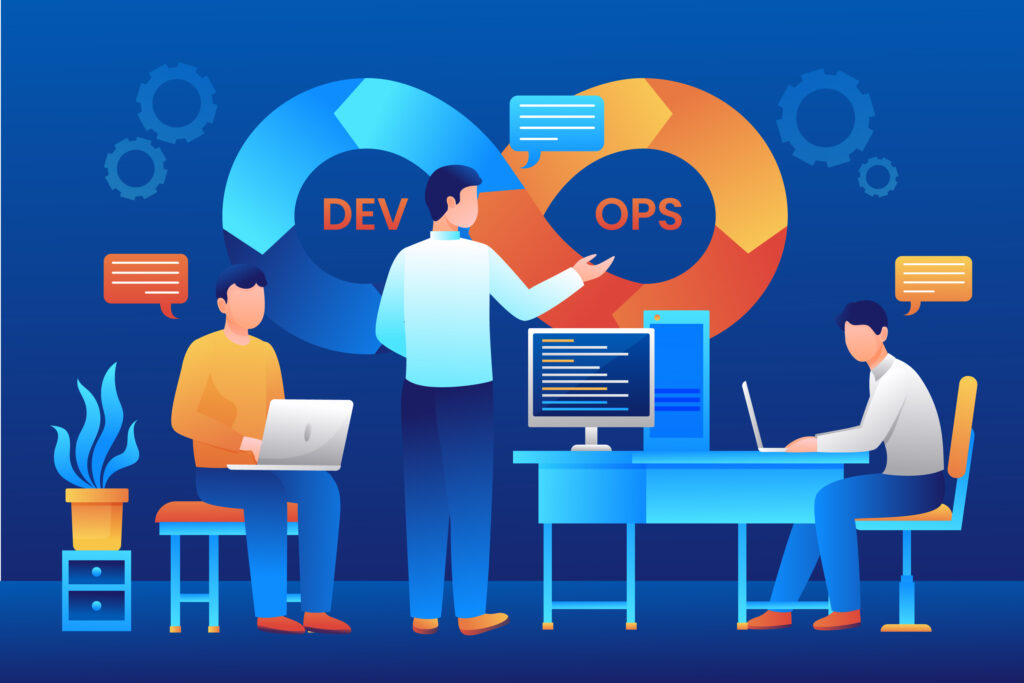In the ever-evolving world of software development and IT operations, DevOps has emerged as a critical approach to achieve faster and more efficient software delivery. DevOps, short for Development and Operations, is a set of practices that emphasize collaboration and communication between development teams and IT operations. It aims to automate and integrate the processes of software development and infrastructure management to achieve continuous delivery and improved software quality.
In this article, we will explore some of the best practices that organizations can adopt to succeed in their DevOps journey. While the focus is on DevOps, we will also touch upon the importance of Infrastructure as Code (IaC) in achieving these best practices.
Embracing Automation
Automation is at the core of DevOps best practices. It involves automating repetitive tasks, such as code building, testing, and deployment. By automating these processes, teams can reduce the likelihood of human errors, speed up delivery, and ensure consistency in deployments.
Automation tools and frameworks like Jenkins, Travis CI, and CircleCI are widely used to automate the build and deployment pipelines. These tools allow developers to integrate code changes seamlessly, trigger automated tests, and deploy to production environments with minimal manual intervention.
Continuous Integration and Continuous Delivery (CI/CD)

Source: headspin.io
Continuous Integration (CI) and Continuous Delivery (CD) are fundamental DevOps practices. CI involves integrating code changes into a shared repository frequently, usually several times a day. Each integration triggers automated tests to ensure that the new code does not introduce defects.
CD extends CI by automating the deployment process. It ensures that code changes that pass CI tests are automatically deployed to staging or production environments. CD pipelines are configured to handle various stages of deployment, from testing to production release.
Collaboration and Communication
Effective collaboration and communication are essential in DevOps. Development and operations teams should work closely together to align their goals and priorities. Cross-functional teams encourage knowledge sharing and facilitate quicker issue resolution.
Collaboration tools like Slack, Microsoft Teams, and Jira can help teams communicate and collaborate more effectively. These tools provide a central hub for discussions, issue tracking, and project management.
Monitoring and Feedback
Continuous monitoring of applications and infrastructure is crucial for identifying and addressing issues promptly. DevOps teams should implement monitoring solutions that provide real-time insights into the health and performance of applications.
Metrics, logs, and alerts can help teams detect anomalies and respond proactively. Feedback loops ensure that teams can make data-driven decisions to improve application performance and reliability.
Scalability and Elasticity
Modern applications often need to scale dynamically based on demand. Cloud computing platforms like AWS, Azure, and Google Cloud offer scalability and elasticity features that allow organizations to adapt to changing workloads.
IaC plays a pivotal role in achieving scalability. With IaC, infrastructure resources can be provisioned, configured, and managed programmatically. This approach allows teams to define infrastructure as code using declarative templates, ensuring consistency and repeatability.
Security and Compliance

Source: blog.invgate.com
Security is a top priority in DevOps. It’s essential to integrate security practices into the development and deployment pipelines. Security scans and vulnerability assessments should be part of the CI/CD process.
Additionally, IaC can help enforce security and compliance standards by codifying security policies and configurations. Infrastructure code can be audited and reviewed to ensure that it adheres to security best practices.
Disaster Recovery and High Availability
DevOps’ best practices include planning for disaster recovery and ensuring high availability of applications. Teams should implement backup and recovery strategies to minimize downtime in case of failures.
IaC enables the replication of infrastructure environments consistently, making it easier to set up redundant systems and disaster recovery mechanisms.
Cross-Platform Compatibility
In today’s multi-cloud and hybrid cloud environments, applications often need to run on various platforms and infrastructures. DevOps teams face the challenge of ensuring cross-platform compatibility while maintaining a consistent user experience. This is where Infrastructure as Code (IaC) plays a pivotal role.
IaC allows teams to define infrastructure configurations in a platform-agnostic manner. By abstracting infrastructure resources into code, organizations can easily adapt their deployments to different cloud providers or on-premises environments. This flexibility not only simplifies the deployment process but also reduces vendor lock-in, giving teams the freedom to choose the best-fit solutions for their specific needs.
Cost Optimization
In the era of cloud computing, cost optimization is a significant concern for organizations. Provisioning and managing resources in the cloud can lead to unexpected costs if not properly monitored and controlled. DevOps teams must consider cost optimization as part of their practices.
IaC helps in cost optimization by allowing teams to define resource provisioning rules, auto-scaling policies, and budget constraints within their infrastructure code. This proactive approach ensures that resources are allocated efficiently, and unnecessary expenditures are minimized. Continuous monitoring and automated scaling can adjust resources in real time based on actual usage, preventing overprovisioning and reducing operational costs.
Compliance as Code

Source: vocal.media
Compliance with industry regulations and internal policies is non-negotiable for many organizations. Ensuring that infrastructure and applications adhere to these compliance standards can be a complex and time-consuming task. However, with the concept of “Compliance as Code,” DevOps teams can streamline compliance efforts.
IaC enables teams to codify compliance requirements and policies directly into their infrastructure code. This means that compliance checks are automated and can be integrated into the CI/CD pipeline. Infrastructure changes are evaluated against predefined compliance rules, and any violations are flagged for immediate remediation. This approach not only reduces the risk of non-compliance but also provides audit trails and documentation to demonstrate adherence to regulatory requirements.
In conclusion, DevOps best practices continue to evolve to meet the ever-changing demands of modern software development and IT operations. As organizations strive for agility, scalability, security, and cost efficiency, Infrastructure as Code (IaC) remains a fundamental component of DevOps excellence. With its ability to ensure cross-platform compatibility, optimize costs, and enforce compliance, IaC empowers DevOps teams to achieve their goals effectively and efficiently. Embracing IaC as an integral part of DevOps practices can lead to a more streamlined and successful software delivery pipeline, ultimately benefiting both organizations and their end-users.
Conclusion
DevOps best practices are crucial for organizations striving to deliver high-quality software at a rapid pace. While the journey to DevOps excellence requires dedication and continuous improvement, the benefits are substantial in terms of efficiency, collaboration, and customer satisfaction.
Amid these best practices, Infrastructure as Code (IaC) stands out as a critical enabler of scalability, consistency, and security. By treating infrastructure as code, organizations can achieve greater agility in managing their IT environments.
As you embark on your DevOps journey, remember that embracing automation, implementing CI/CD pipelines, fostering collaboration, and prioritizing security are essential steps. And in the background, Infrastructure as Code quietly ensures that your infrastructure is as agile and adaptable as your codebase.



